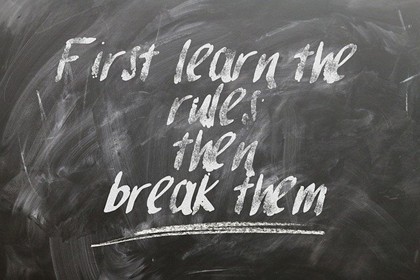It doesn't take an aspiring piano player long to find out how important it is to learn their Major keys of music. They're  an incredibly valuable tool. When you get them well under hand, they open the door to understanding chords and chord progressions.
an incredibly valuable tool. When you get them well under hand, they open the door to understanding chords and chord progressions.
The little known secret about Major keys that I want to share with you are parallel lettered Major keys of music. Now I want to clarify that this article is about parallel lettered Major keys and not parallel keys of music.
Parallel keys of music are Major and minor keys (or scales) that have the same tonic (or first note). One is Major and the other is minor.
Parallel lettered Major keys are ones which have the same lettered notes in the same sequence minus the presence or absence of sharps and flats.
For example, the key of B Major and the key of B flat Major have the same lettered notes in the same sequence.

Barring the sharps and flats, these two keys are identical in their lettered sequence. The significance of noticing this characteristic is that it condenses the number of Major keys and makes them easier to learn and identify.
Backing up just a bit, let's look at all 7 lettered notes. Every Major key of music must contain all 7 notes. They can not appear twice in the same key. If any one of them contains an accidental (sharp or flat), any other note that has an accidental must be of the same type.
Every Major key of music must contain all 7 notes. They can not appear twice in the same key. If any one of them contains an accidental (sharp or flat), any other note that has an accidental must be of the same type.
Let's look at a few examples.
The key of C Major starts on C and progresses and starts over with A. There are no sharps or flats in this key. All 7 lettered notes are represented in this key. The key of C sharp Major also starts on C, progresses and starts over with A. It is identical alphabetically. The difference is that every note is sharped (raised a half step). If you refer to any note as natural or flat you would be technically incorrect. C sharp is also enharmonic (has the same notes) with D flat Major.
The key of C sharp Major also starts on C, progresses and starts over with A. It is identical alphabetically. The difference is that every note is sharped (raised a half step). If you refer to any note as natural or flat you would be technically incorrect. C sharp is also enharmonic (has the same notes) with D flat Major.
For example:
The note commonly known as F isn't an F in this context. If you referred to it as such, you would have two F's. As I said before, each lettered note can only appear once. So it's correctly referred to as an E sharp. It's the same with the note commonly known as C. You already have C sharp, so to refer to it as C would be incorrect. It's actually a B sharp.
It's the same with the note commonly known as C. You already have C sharp, so to refer to it as C would be incorrect. It's actually a B sharp. All of the black keys of course are sharps and named as such. So it's incorrect to refer to any of them as flat.
All of the black keys of course are sharps and named as such. So it's incorrect to refer to any of them as flat.
There's another parallel lettered Major key in the same sequence as C. It's the key of C flat Major. C flat Major is enharmonic with B Major. Again, they share the same notes.
Just as with C Major and C sharp Major, C flat Major has the same lettered note sequence. But every note in C flat Major is flatted. The note commonly known as B isn't a B in this context. It's C flat.
The note commonly known as B isn't a B in this context. It's C flat. What looks as an E is an F flat.
What looks as an E is an F flat. All of the black keys of course are flats and named as such. So it's incorrect to refer to any of them as sharp.
All of the black keys of course are flats and named as such. So it's incorrect to refer to any of them as sharp.
Study these parallel lettered Major keys. It makes learning and retaining Major keys easier. It also creates proficiency in playing chords and chord progressions. The more familiar you are with these Major keys and the lettered notes they consist of, the less overall effort you'll exert playing the music you want to play.
Someone will often pose a very valid question about this Major key perspective. I feel I owe you an answer for reading this article. The question is: Does it really make any difference how I refer to the notes that Major keys consist of? My chords/keys of music are going to sound the same no matter how I refer to them.
This is true. You'll often find musicians that mix sharps and flats in the same key. The point of this article is to develop an organization of Major keys of music inside your head. The essence behind the previous question is, is it ok for an aspiring piano player to break the "rules" as I've unpacked them here?
The answer is yes. But you should only break the rules after you learn what the rules are. This is to develop clarity. When you know that you know, it's not difficult to move on to bigger and better things.
Until next time, Go Play!
Greg Lee
Latest posts by Greg Lee (see all)
- What is a minor/Major 7 Chord? - October 26, 2023
- 7 Chord Substitutions that Professionals Use - October 19, 2023
- 5 Simple Chord Tricks to Sound Amazing - October 5, 2023













